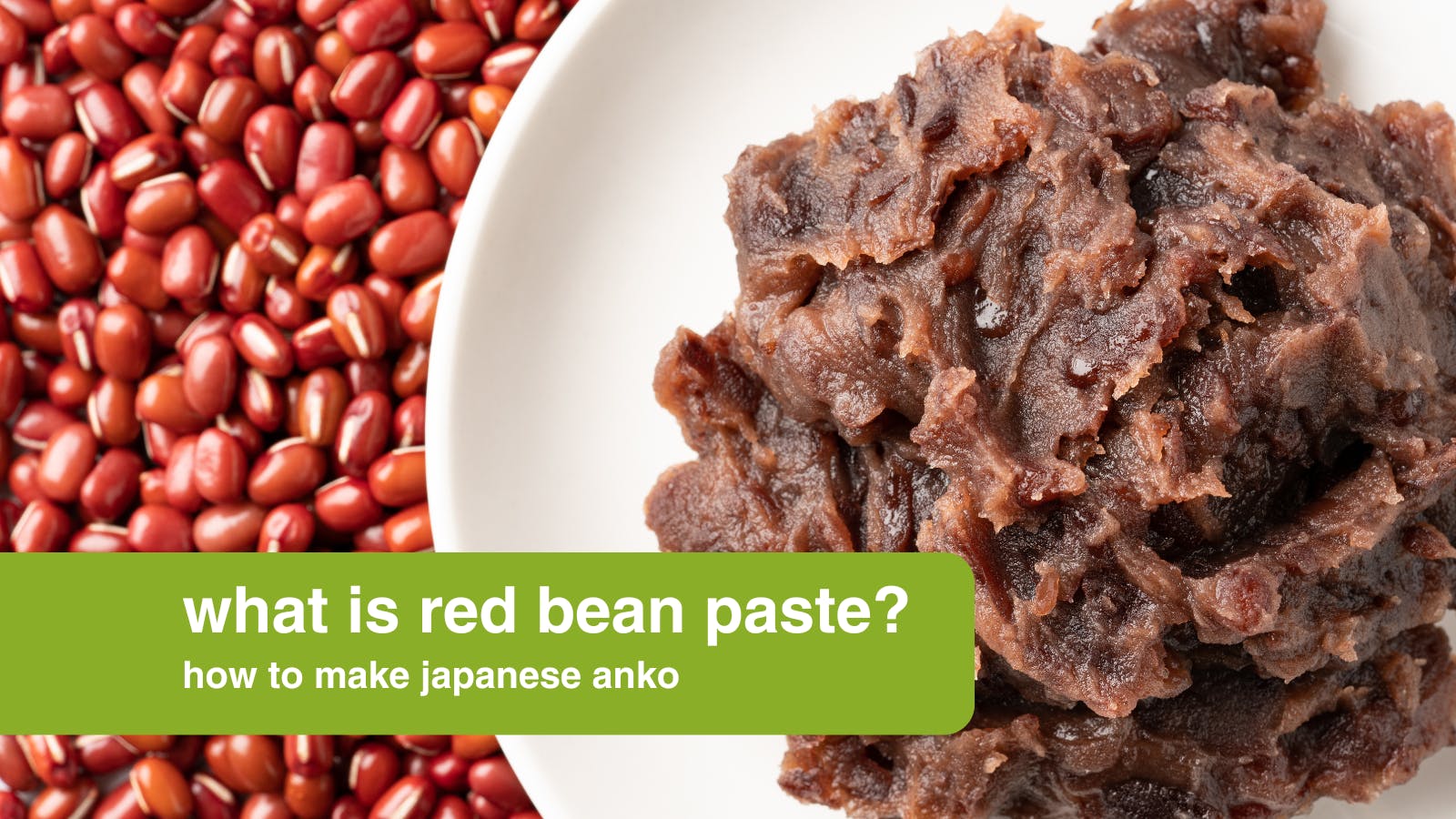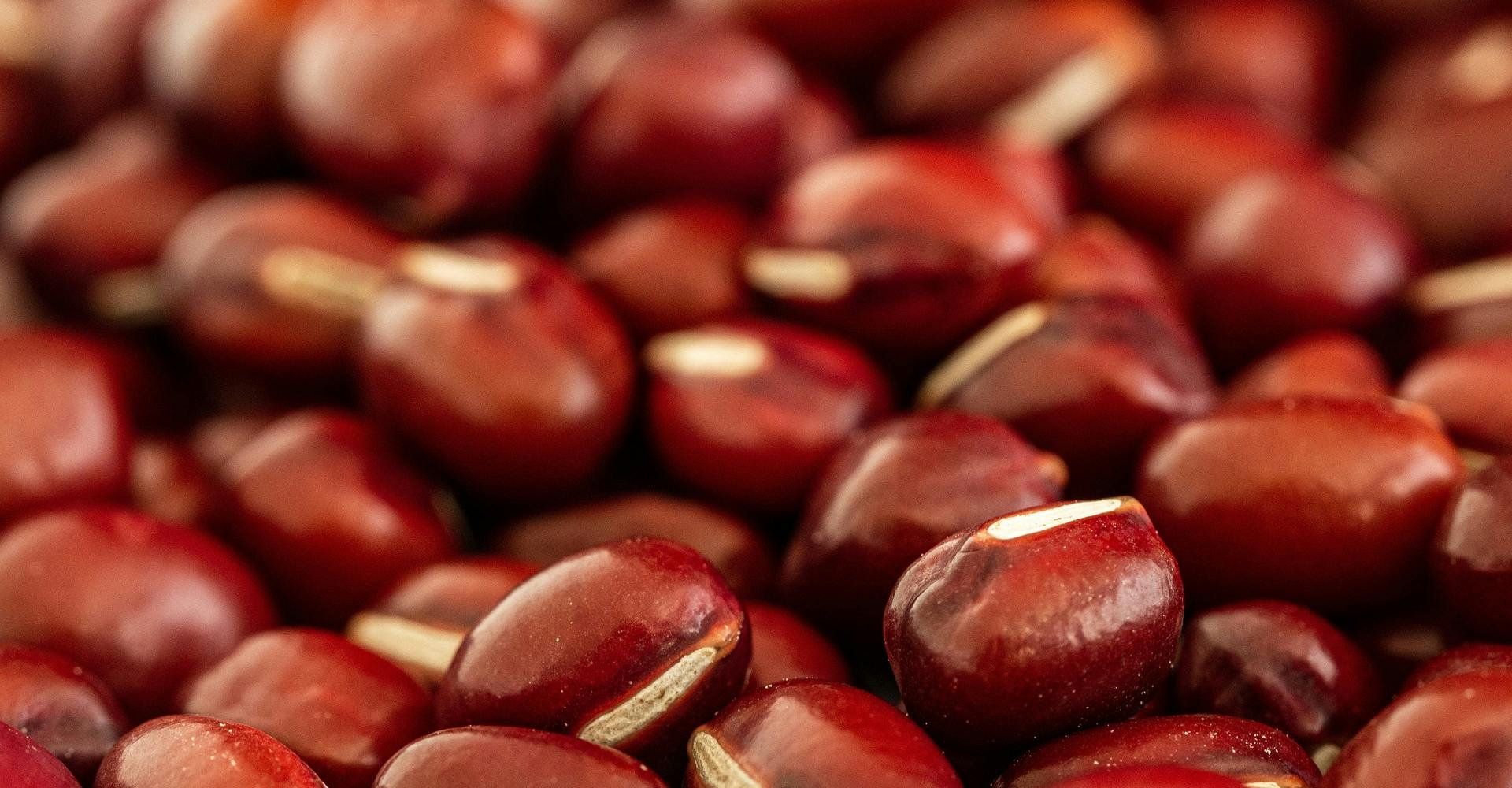your cart
Your cart is empty.
What is Red Bean Paste?
Red bean paste is a staple in many Asian desserts & sweet treats. Here’s everything you need to know, including an easy recipe to get you started!

Sweet red bean paste is one of the most popular flavours for desserts and puddings in Japan, China, Korea and various other East Asian countries. We break down everything you need to know about this staple ingredient!
What is Adzuki Bean Paste?
Also known as adzuki bean paste, red bean jam, anko (in Japan) and hong dou sha (in China), red bean paste is a common dessert ingredient made from red adzuki beans that have been cooked with sugar and mashed into a paste.
The jam is typically a naturally deep red colour because of the beans used, although some forms of the paste can be white or black, depending on the processes used and whether the husk was removed or not.
While most types of red bean paste are sweetened, making them suited to sweet dishes and desserts, they can also be made without sugar or sweetener and used in savoury meals or snacks.
What Beans Are Used in Red Bean Paste?
Adzuki beans are used to make this paste. These beans have a naturally earthy flavour with a very slight hint of sweetness, making them a great dessert flavouring.

What Does Red Bean Paste Taste Like?
Many Asian desserts are not overly sweet especially compared to lots of Western European treats. Red bean paste provides dishes with a subtly sweet taste and nutty notes. Some people compare it to being akin to the flavour of cooked sweet potato with added sugar – noticeably sweet but with a relative earthiness.
Is Red Bean Paste Healthy?
The beans themselves are a fantastic source of protein, fibre, vitamins and minerals – all good things for the body. However, you must also be considerate of the bean paste’s sugar content. Some pastes may be more ‘unhealthy’ in terms of higher sugar content than others.
Ultimately, if eaten in moderation, dishes and sweets containing red bean paste can be a part of a healthy balanced diet.

Types of Red Bean Paste
There are generally two main types of red bean paste; smooth and chunky. In Japanese cuisine, these are known as:
- Tsubu-an: A coarser, chunkier paste where the beans remain partially intact, made by crushing the beans without breaking them down entirely.
- Koshi-an: A very smooth paste where the beans have been totally mashed and perhaps even passed through a sieve to remove all lumps.
Aside from red bean paste, you may also come across other kinds of sweet bean paste, such as shiro-an (made from white beans like navy or lima) and kurogoma (made from black sesame).
What is Red Bean Paste Used For?
You’ll often find sweetened red bean paste used in an array of traditional desserts, particularly from China and Japan. It’s a common addition to things like:
- mochi
- mooncakes
- dorayaki
- tangyuan
- dessert soups
- pastries
- ice cream
- sweet buns
- and anything else that needs a hint of tasty sweetness!
How to Make Red Bean Paste
A basic red bean paste recipe is pretty simple and can be used alongside a range of other dishes.
ingredients
How Long Does Red Bean Paste Last?
Your homemade paste will last around 4 days if you keep it in an airtight container in the fridge.
Can You Freeze Red Bean Paste?
Yes, you can freeze any leftover paste and keep it in the freezer for a month or two. When you’re ready to use it, just defrost it overnight.
Want to enjoy an instant taste of red bean paste for yourself? Check out our full range of Asian snacks and sweets to discover delicious desserts and treats that make good use of this iconic ingredient!
We also stock ready-made red bean paste for your culinary creations, ideal if you don’t want to make it from scratch.
this site uses cookies
We and our advertising partners use cookies on this site and around the web to improve your website experience and provide you with personalised advertising from this site and other advertisers. By clicking allow, you accept the placement and use of these cookies for these purposes. Learn More


